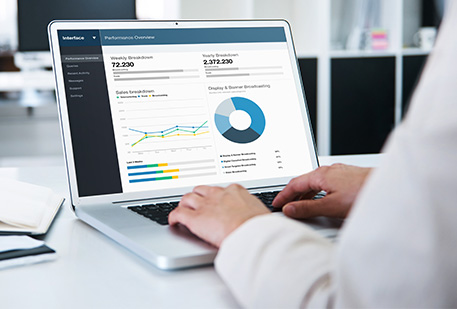HR analytics – the first 100 days (An IBM report summary)
The actions you take in the first 30 to 100 days can set the course for organizational analytics for the next three to five years.
That’s the guidance from Dr. Nigel Guenole, Senior Managing Consultant IBM Smarter Workforce and Senior Lecturer in Management at Goldsmiths, University of London.
While Guenole observes that there’s “no one perfect model”, for implementing HR analytics, there are some general principles and stages companies should follow. These are set out in IBM’s report “Starting the workforce analytics journey: the first 100 days”, co-authored by Guenole.
The report focuses on the organizational development and change management required for HR to establish an enduring workforce analytics program, and addresses the issues in phases.
Phase 1The first phase is all about establishing a clear vision of what you want to achieve. Guenole says:
It’s not about opening up a statistics program if you want to do this in an enduring, systematic way — it’s about setting a vision for analytics and your organization. This involves more than setting a vision for HR alone; it’s about tuning into the business challenges and the part HR can play in helping the business meet those challenges.
While it’s key to establish a vision at the outset, that doesn’t mean it’s carved in stone from day one; it should be an iterative process. HR needs to share it with the HR business partners and business line managers and tweak that original idea until everyone is happy.
It’s also important in this phase to define the governance model and establish what legislation they should be aware of, taking into account country differences in legislation, for example.
During those early weeks, HR needs to find out what line business executives really think about HR, as this will impact how they should approach rolling out analytics. Guenole explains:
If it is viewed as an operational function and you want to do something strategic with analytics, then perhaps you will need to engage with the line of business directly, because they might not be used to hearing from HR in this capacity.
If, however, it turns out that HR is seen as a strategic partner, then it might be better to make use of the relationships the HR business partners already have in the organization. HR will have to “flex the model” according to their standing.
Those interviews with the business lines will also help identify some of the challenges the business is facing and influence where HR chooses to target its analytics. It’s very important to have a “quick win” project that will instil confidence in the business and act as a proof of concept.
Finding suitable business challenges where HR can help probably won’t be a problem; the challenge will be to prioritize which order to tackle them. To do this, HR must weigh up the ease of implementation against the level of impact.
The golden ticket is to find a project that is both easy to implement and has significant long or medium term impact. But Guenole concedes that, in the first 100 days, this might be quite difficult to achieve:
So what you need to do is focus on something that is already being done – in compensation, say, or recruitment – so the process is already being done, but with analytics you can do it faster.
Such projects don’t involve largescale changes in the way people work, but the impact of using analytics can be easily felt and have what Guenole refers to as a “direct cost impact” – clear results and realized quickly.
Phase 2The second phase, covering the first 60 days, is about defining your approach and understanding the reliability and accuracy of the company’s data. The report stated that, “Identifying the right data requires leveraging the expertise of HR business partners and executives. Once the data are identified, they should be cleansed and harmonized.
Without accurate data, analytics will be ineffective at best and potentially misleading at worst.” The data needs to be trustworthy but not perfect.
Hand in hand with data trustworthiness is the need to be disciplined about how the data is inputted and how the processes are defined. Understanding the technology options is another key element of this phase. The old-style data infrastructure of ERP systems and data warehouses are off the menu. Cloud enables companies to speed things up massively and have simplified data management and storage.
But, according to Kieran Colville, a consultant for IBM Smarter Workforce, neither pristine data nor analytics acumen is as important as the ability to communicate what workforce analytics can do: If you can’t tell a good story, if you can’t visualize it so that the line of business executive gets it intuitively and emotionally, this thing isn’t going to fly no matter how good the rational argument is.
Most important of all, the report says, is to “keep in mind that analytics has the potential to give HR an enhanced strategic role in helping the business grow and improve its operational effectiveness. The insights can have a huge impact on the business and its
workforce.”
A brief summary from IBM’s report Starting the workforce analytics journey: the first 100 days, co-authored by Nigel Guenole, Sheri Feinzig, Jonathan Ferrar and Joanne Allden, IBM Smarter Workforce.
 CA-EN
CA-EN UK
UK AU
AU US
US NZ
NZ PH
PH ZA
ZA SG
SG HK
HK


